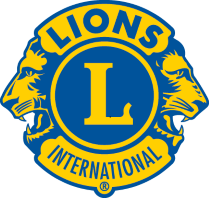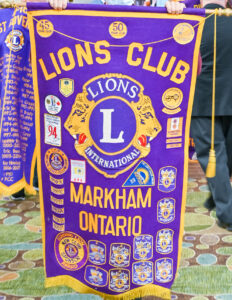Lions History
Lions Clubs began as the dream of Chicago insurance man Melvin Jones, who wondered why local business clubs could not be more concerned with the betterment of their communities and the world at large.
Jones' idea interested the Business Circle of Chicago, and they told him to discuss his concept with other groups around the United States. As a result the first organization meeting was held at a local hotel on June 7, 1917. Among the clubs invited was the Association of Lions Clubs, headed by Dr. W.P. Woods. The 12 men who gathered there overcame a natural sense of loyalty to their parent clubs and voted the "Association of Lions Clubs" into existence.
Thirty-six delegates representing 22 clubs from nine states met in Dallas Texas in October,1917 at a national convention, approved the "Lions Clubs" designation, and elected Dr. William P. Woods as their first president. Guiding force and founder Melvin Jones named acting secretary, thus began an association with Lionism that only ended with his death in 1961.
That first convention also began to define what Lionism was to become. A constitution and by-laws were adopted, the colours of purple and gold approved, and a start made on Lionism's Objectives and Code of Ethics.
One of the objectives was startling for an era that prided itself on mercenary individualism, and has remained one of the main tenets of Lionism ever since. "No Club," it read, "shall hold out the financial betterment of its members as its object."
Community leaders soon began to organize clubs throughout the United States, and the association became "international" with the formation of the Windsor, Ontario, Canada Lions Club in 1920. Clubs were later organized in China, Mexico, and Cuba. By 1927, membership stood at 60,000 in 1,183 clubs.
In 1935, Panama became home to the first Central American club, with the first South American club being organized in Columbia the following year. Lionism reached Europe in 1948, as clubs were chartered in Sweden, Switzerland, and France. In 1952, the first club was chartered in Japan.
In 1990, Lions launched its most aggressive sight preservation effort, Sight First. The US$143.5million program strives to rid the world of preventable and reversible blindness by supporting desperately needed health care services in 40 countries on 5 continents.
In addition to sight programs, Lions Clubs International is committed to providing programs that help young people live up to their potential - programs that stimulate an awareness of what is going on in the world around them.. Lions Clubs also work to improve the environment, build homes for the disabled ,support diabetes education, conduct hearing programs and through their foundation, provide disaster relief around the world.
Lions Clubs International has grown to include nearly 1.35 million men and women in approximately 45,000 clubs located in 197 countries.
Lions Emblem
Throughout the world, Lions are recognized by the emblem they wear on their lapels. It consists of a gold letter "L" on a circular purple field. Bordering this is a circular gold area with two lion profiles at either side facing away from the center. The word "Lions" appears at the top, and "International" at the bottom. Symbolically, the lions face both past and future -- proud of the past and confident of the future. Lions wear their emblem with pride.
Lions Colours
The royal colors of purple and gold were selected as the official colors when the association was organized in 1917. Purple stands for loyalty to friends and to one's self, and for integrity of mind and heart. Gold symbolizes sincerity of purpose, liberality in judgment, purity in life and generosity in mind, heart and purpose toward humanity.
